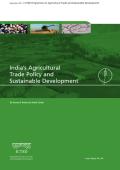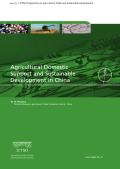This report was produced by the Working Group on biofuels of the International Panel for Sustainable Resource Managemet. It provides an overview of the key problems and perspectives toward sustainable production and use of biofuels. It is based on an extensive literature study, taking into account recent major reviews. The focus is on so-called first generation biofuels while considering further lines of development.
This report was launched during China’s Twelfth Five-year Period (2011-2015). After revising the measurement system of the Green Development Index 2011, the report measures the green development level of 30 provinces, municipalities and autonomous regions as well as 38 large and medium-sized cities in China. A Public Satisfaction Survey of the Urban Residents is first introduced into the report. Both the province and the city Green Development Index systems consist of three parts, the green degree of economic growth, the carrying potential of natural resources and environment, and the support degree of government policies. The three parts reflect the production and resource usage efficiency, the situation of environment and resources protection and pollutants emission, and government’s related investment and management respectively. The China Green Development Index Report 2012 has the comprehensive evaluation of the green economy development in China and its importance to China’s rational development and switch in economic development model.
The green growth paradigm emerged from evolving global strategies that coherently promote a more socially inclusive, low-carbon, resource-efficient, stable economy, with decreasing poverty. Opportunities and challenges associated with the paradigm shift are expected to transform the travel and tourism (travelism) sector in all respects and on a global scale. This involves the transformation of the entire travelism value chain, as well as the communities in tourism destinations. However, there is a lack of systematic reports on wide-ranging and complex implications of the green growth paradigm for the travelism sector.
Renewable energy (RE) sources are key to the global transition to a low carbon economy. Yet their reach and growth trajectory is not yet at the scale required to respond effectively to the climate challenge. This report focuses on how to unlock the power of clean energy by exploring the conditions needed to stimulate greater private sector investment in renewable energy. It draws on insights provided from 18 Fortune Global 500 companies that currently buy, or generate onsite, renewable energy and are looking to expand such investments.
How can trade policy respond to the needs and concerns of more than a billion people in the developing world that lack access to energy for fulfilling their daily needs such as cooking and lighting? An effective way would be address trade barriers to sustainable energy goods that are critical to providing such access. This paper looks at specific examples of sustainable energy goods-namely, solar technologies and associated products that have become an increasingly popular and cost-effective choice to deliver electricity to people not connected to the grid. However barriers to more widespread diffusion of these products still remain. The paper examines a number of domestic policy and market bottlenecks that stifle growth and the rate of uptake for solar products and how they can be overcome. It then examines patterns of trade in products such as solar lanterns and solar panels, policies that hinder trade such as import tariffs and taxation and a range of trade-relevant issues including, among others, those related to customs classification practices and delays in customs clearance and standardization.
Could trade policy measures enable a rapid dissemination of sustainable energy goods and services, given the reality of the widespread use of both fossil-fuel subsidies as well as clean-energy incentives? With the help of a computable general equilibrium modelling exercise, this paper attempts to show what happens to a number of economic and environmental variables such as exports and imports, carbon emissions, energy and electricity prices, employment generation and income, when import tariffs as well as local content measures (LCRS) for renewable energy equipment are removed under different scenarios. A similar exercise is conducted for ethanol involving the removal of import tariffs with and without removing ethanol subsidies.
Regional Trade Agreements (RTAs) are increasingly used for addressing sustainable development goals by including provisions on climate change and sustainable energy. This paper examines that trend and presents an overview of different categories of such provisions in a broad sample of recent RTAs, identifying current regulatory challenges and highlighting obstacles in addressing climate change. It appeals to the necessity of securing flexibility for regulators in targeting new climate threats and the need for cooperation to implement international and national objectives in the efforts to enhance low-carbon technologies. After a preliminary assessment of the potential legal effects of the provisions, the authors make recommendations intended to optimize the potential of promoting the development of a sustainable low-carbon economy through trade agreements.

This paper offers an initial assessment of the use, potential usefulness and legality of local content requirements (LCRs) in renewable energy policy. By scrutinising existing empirical evidence on LCRs, the authors identify a number of initial basic conditions that determine the effectiveness of such measures in creating domestic industries. The paper provides an in depth analysis of the wind LCR in China, and descriptive analyses of other LCRs used in the promotion of renewable energy around the world. It further qualitatively addresses the question whether or not local content requirements and medium-term innovation could be aligned. Finally, it discusses the legality of the measures under WTO law.
Other case studies include Canada, Spain, Italy, France, Greece, Croatia, the United States, India, Brazil, South Africa and Turkey.


